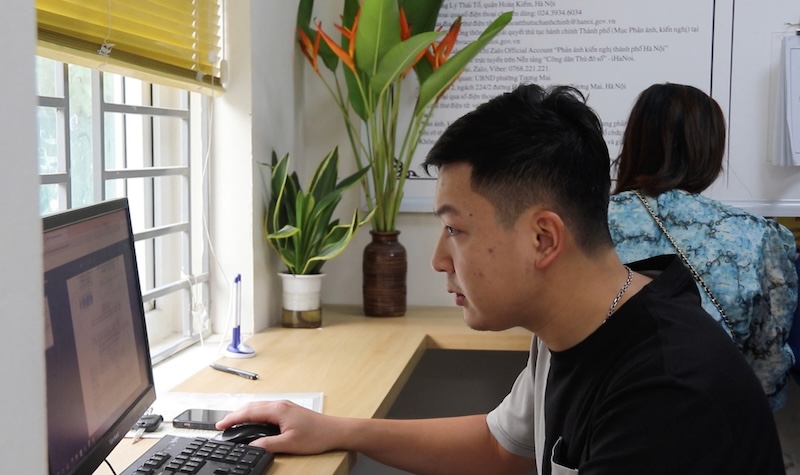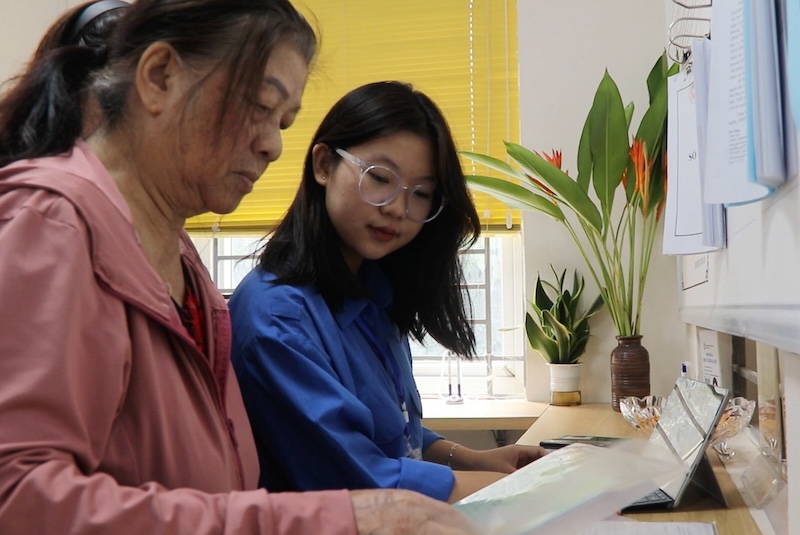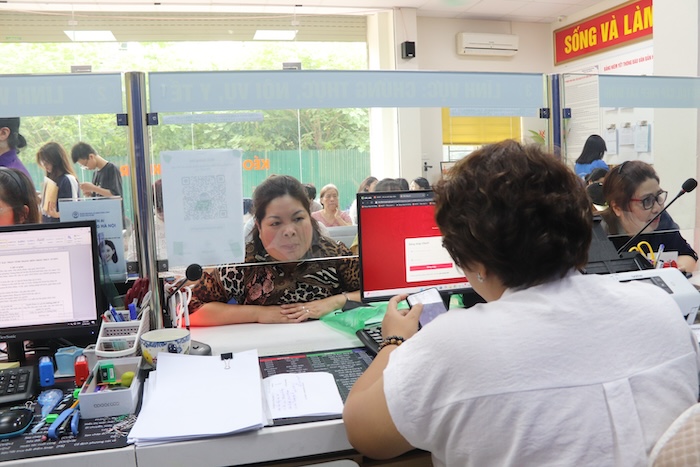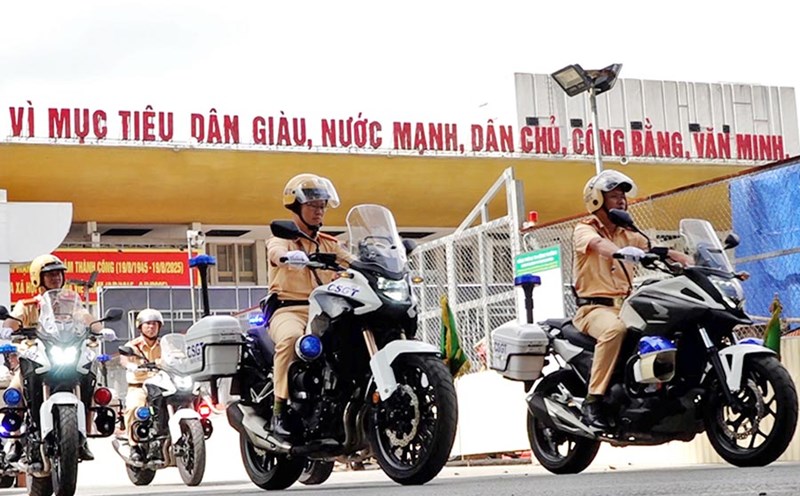People learn about digital cases
We visited Tuong Mai ward (Hanoi) after 2 months of operating the 2-level local government model, the atmosphere at the one-stop department was completely different from before. With 74 community digital transformation teams and more than 500 members, Tuong Mai ward has created an extensive support network. More than 300 youth union members were present at public administrative points and 24 mobile points to guide people. This change has directly affected their psychology and satisfaction.
Mr. Vu Duc Thien, a resident, shared: "Accessing technology for young people is easy, but for the elderly it is very difficult. I find the City's Directive very correct in focusing on supporting this group of subjects".

Meanwhile, Ms. Do Mai took her 85-year-old mother to do land procedures, excitedly sharing: "Previously, going to work as a paper worker was a nightmare, having to wait a long time and getting tired. But today, my mother's procedures were handled quickly. No more jostling, no more pressure. My mother was waiting but was still very happy.
If in the past, digital transformation was often envisioned through large projects in the center, the spirit of Directive 11 has spread strongly to suburban communes, where people's lives are still attached to agriculture.
In Hat Mon commune (Hanoi), this locality does not only stop at propaganda through speakers, billboards, and posters but sets specific targets for 2025: 95% of civil servants, 100% of students, and over 85% of adults must have basic digital technology knowledge. In particular, the commune aims for 100% of villages to effectively maintain the operation of the Community Digital Transformation Team - the core force "going to every alley, knocking on every door" to guide people.
The most creative point of Han Mon is the "Digital Family" model that encourages each family to have at least one technology- savvy member to guide their relatives. The "Digital Village, Residential Area" model uses Zalo to connect households and disseminate weekly knowledge. The most breakthrough is the model of "Digital Market - Digital Rural", piloting 100% payment via scan code at local markets, helping farmers and traders get acquainted with cashless transactions, opening up online sales opportunities.
Platform for serving administration
Last July, the Hanoi People's Committee issued Directive No. 11/CT-UBND clearly demonstrating the mindset of shifting from management government to service government. The Chairman of the City People's Committee requested the implementation of the campaign "45 days and nights to support digital transformation activities" throughout the area, in the context that the city is entering the stage of operating the two-level local government model.
The highest goal that Directive 11 aims for is not only the numbers of infrastructure or applications, but the experience and satisfaction of the people. In particular, increasing support for organizations and individuals, especially vulnerable groups in accessing and effectively using online public services; shortening the time to handle administrative procedures, ensuring convenience, transparency and friendliness.

To realize this goal, the Hanoi People's Committee has proposed specific, highly practical solutions, focusing on the strength of the community. The key task is to strengthen and promote the role of Community Digital Transformation Teams. This force is considered an extension of the government in each village and residential group, with the task of "going to every alley, knocking on every door", directly guiding and supporting people to install and use digital applications and services right in the area.
Ms. Nguyen Thi Mai Lan, Head of the Department of Culture and Society of Tuong Mai Ward, said that the ward has developed a detailed plan to respond to the city's 45-day and night campaign.
"We have quickly consolidated 74 community digital transformation teams with more than 500 core members, mainly union members and young people with expertise. The ward not only organizes fixed support points but also deploys mobile teams to come to the house to directly support households, especially the elderly and those with difficulty in traveling, helping them install and guide the use of essential services," Ms. Lan shared.
According to Ba Lan, despite some small difficulties such as unstable network infrastructure in some areas, thanks to the enthusiasm and perseverance of the support team, by the end of August, the ward had reached and supported over 70% of households, determined to complete 100% of the target before September 30.
Directive 11 also requires promoting the scoring model " mobility digital learning environment". These spots will be flexibly organized at cultural houses, community activities or to the homes of those in need but having difficulty traveling. The top priority is to support the elderly, people with disabilities, poor and near-poor households. The support force includes union members, youth, students in the information technology industry and human resources from telecommunications businesses, who will directly "handshake hands to show how to work", helping people get acquainted with essential platforms such as the National Public Service Portal, iHanoi application, VNeID...

The Hanoi People's Committee assigned the Department of Science and Technology as a focal point for mobilizing human resources and organizing training. The Department of Home Affairs is responsible for urgently guiding on information technology job positions at the commune level, ensuring there are enough full-time personnel. The City Police coordinated to hand over platforms to organize effective training. At the same time, units must ensure telecommunications network infrastructure, including 5G networks, at people's service points, ensuring smooth and stable connections.











